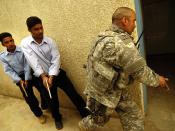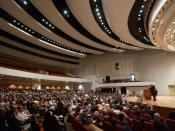CLASS:Art Appreciation
ARTICLE:The New York Times, February 25, 2003
TITLE:Oldest Human History is at Risk by Holland Carter and
War in Iraq Would Halt Digs in Region by John Noble Wilford
SUMMARY OF ARTICLES
As we all know, unless other action is taken, there will be war in Iraq in the upcoming months. This would be devastating not only the people there, but on the historical artifacts and thousands of archeological sites in that region. The author pointed out that there are '10,000 identified sites, but only a fraction have been explored revealing the world's earliest known villages and cities and the first examples of writing.'
The first article depicted some urban cities of ancient Persian civilization like Ur which boasts of the best preserved ziggurat in Iraq, and Babylon which has documented history in the Bible and has yielded a large collection of pre-Islamic pottery. Many of these ruins have been looted in previous wars by unscrupulous people who have taken advantage of the chaos that war brings to achieve enormous profits by selling the stolen artifacts on the black market.
Nineveh is actually 'on the World Monuments Watch list of 2000 as one of the 100 most endangered sites because many of its sculptures were stolen during the Gulf war.' Not only are artifacts stolen but many monuments and edifices are destroyed by bombs and blasts. The author identified an apt example, Ctesiphon which had many cracks in the large audience hall. This was later patched up by archeologists but more bombing could even bring the whole structure down. Iraq is also a nation that has a lot of spiritual impact on the Islamic religion. There are many shrines and monuments outside even the more modern cities like Baghdad, Basra and Mosul and if the country is attacked,


